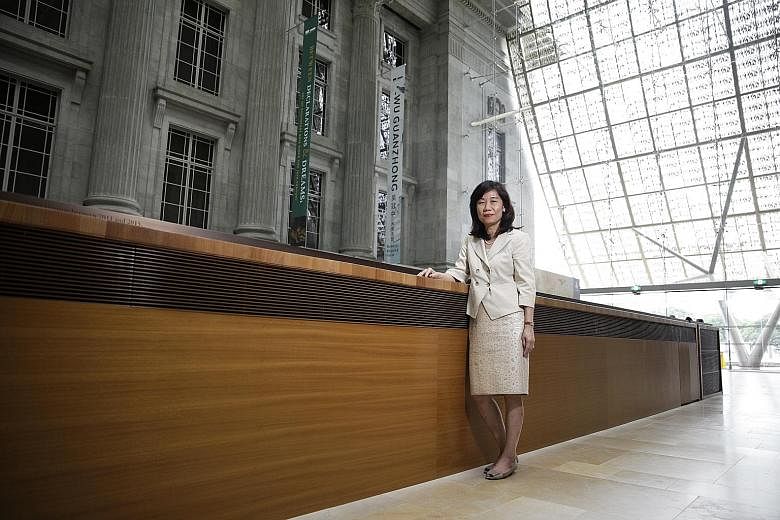What makes Singapore home, truly? Some people may point to the glittering Marina Bay skyline, while others may rave about chicken rice and other local food.
For Mrs Rosa Daniel, chief executive officer of the National Heritage Board (NHB), what makes Singapore different and distinctive is the city's flavour: the essence of the people who live, work and play in the city.
She said that part of cultivating and preserving a quintessentially Singaporean identity lies in making important places special and attractive, in a way that brings out their characteristics.
There is still much work to be done to ensure Singapore is not just a place to "be", but a place to "belong", she added.
This includes taking responsibility for both the tangible and intangible aspects of Singapore's culture and heritage.
Much of that responsibility lies with the NHB. Since 1993, it has been responsible not only for managing the national museums and heritage institutions, but also for keeping Singaporeans excited about their collective history.
Mrs Daniel highlighted several past initiatives that have kept heritage areas vibrant.
"One of the things that we think was fairly well done is the Singapore Night Festival, which activates the Bras Basah and Bugis precinct.
"For several years, it has been a good learning experience for us, and it's grown bigger and bigger over the years."
The NHB has also gone into the heartland to stimulate interest.
She said: "Our heritage grants have activated interest from groups which have come forward and taken the lead themselves, to tell the story of a place."
She cited Kolam Ayer as a prime example of community-led storytelling. "Kolam Ayer is special because the people there were the first to explain to others why it was special. It's one thing for the NHB or the National Arts Council to create opportunities but another for people to tell authentic local stories - that's really what makes it come alive," she said.
While past NHB initiatives have enabled the physical aspects of culture to remain memorable, a masterplan to engage Singaporeans with the country's history and heritage is just beginning. She said: "This is about our social practices, traditions, memories, and our visual arts.
"In partnership with other institutions such as the Ministry of Education (MOE), we hope to document that, research it, and and then transmit it from one generation to the next through education and research."
She said schools are the great leveller and the linchpin for success. "For an arts-infused education, we have to be talking and coordinating with educational agencies, which is why our conversations with MOE really help," she said.
"We must make those opportunities available. If you're not careful, the arts becomes the domain of the privileged. You cannot take for granted that everyone has the same access - we have to provide that, and help the community."
Nonetheless, while the creative expression of Singaporean youth must be encouraged, she believes that facilitating creative freedom is in itself a balancing act.
While Singapore is unlikely to see the emergence of a youth-centric district such as Hongdae in Seoul, where artists are by and large free to design graffiti and stage street performances at will, the authorities are looking into creating spaces for such artistic expression.
"I think it's an art - how you balance it, to facilitate and allow these expressions more and more," she said. "Culture can help us along, but cultural expression can also sometimes be, if we're not careful, damaging to the social fabric."
Nevertheless Mrs Daniel is optimistic about the preservation of Singapore's intangible heritage.
"We are a small country, but we have done very well. I always say that we're only 700 sq km, but we have 72 monuments, more than 7,000 conserved buildings, and now we have one Unesco site," she said, referring to the Singapore Botanic Gardens.
"Our multi-cultural identity, and the fact that we are a young but very can-do nation - all these things are what make us distinctive.
"Culture plays a very important role in our social fabric, and we need to sustain it. And I'll approach it as both a challenge and an opportunity."

